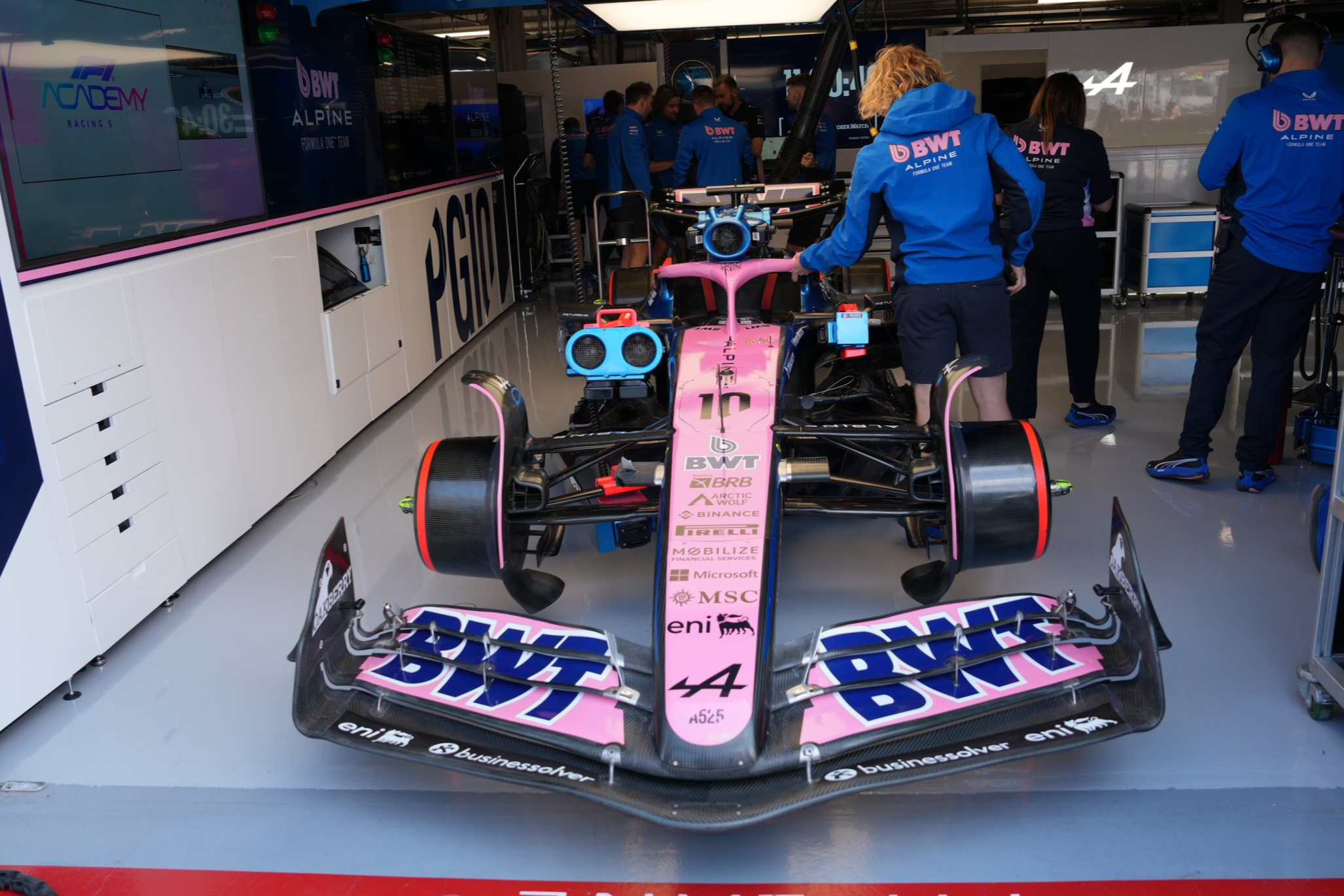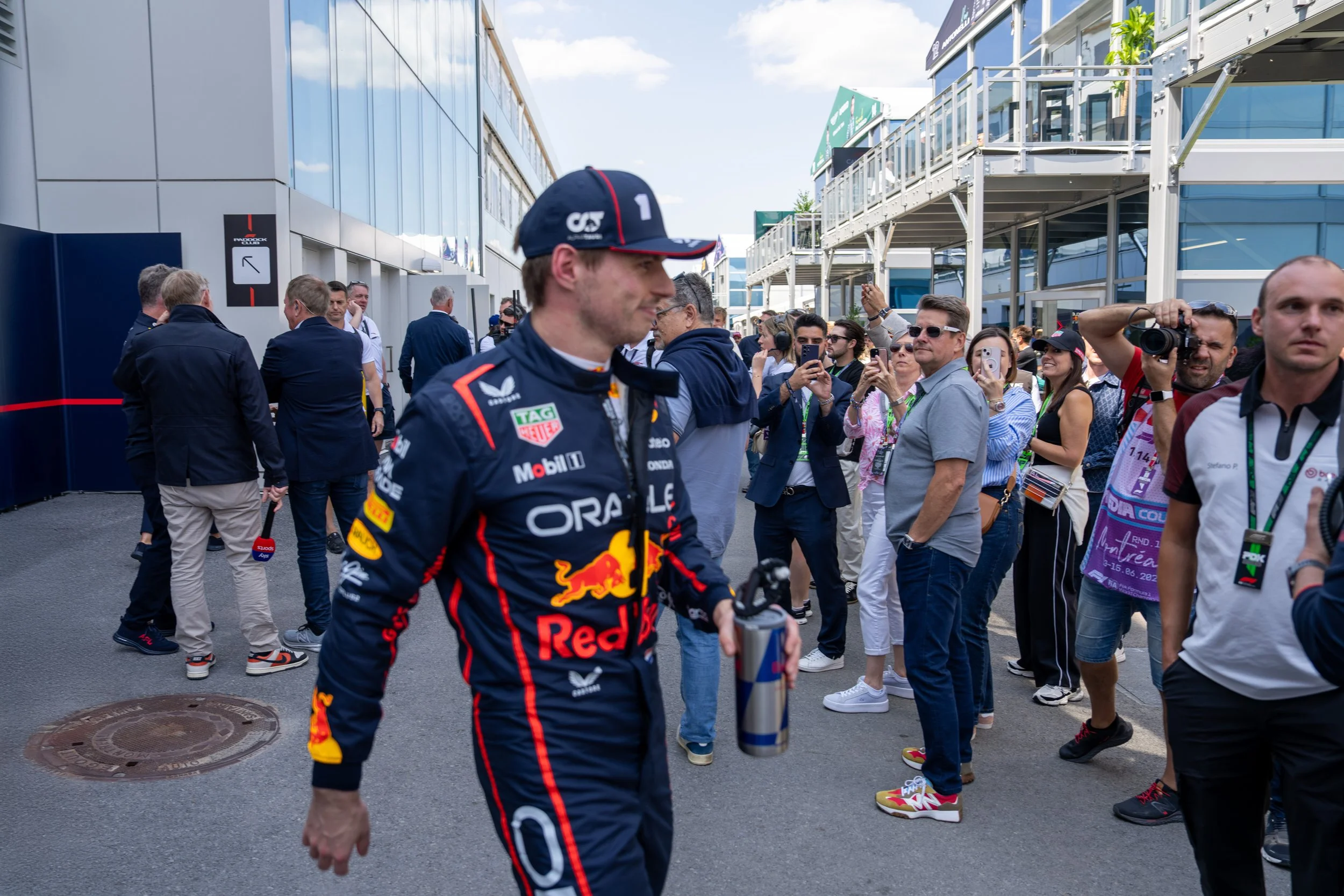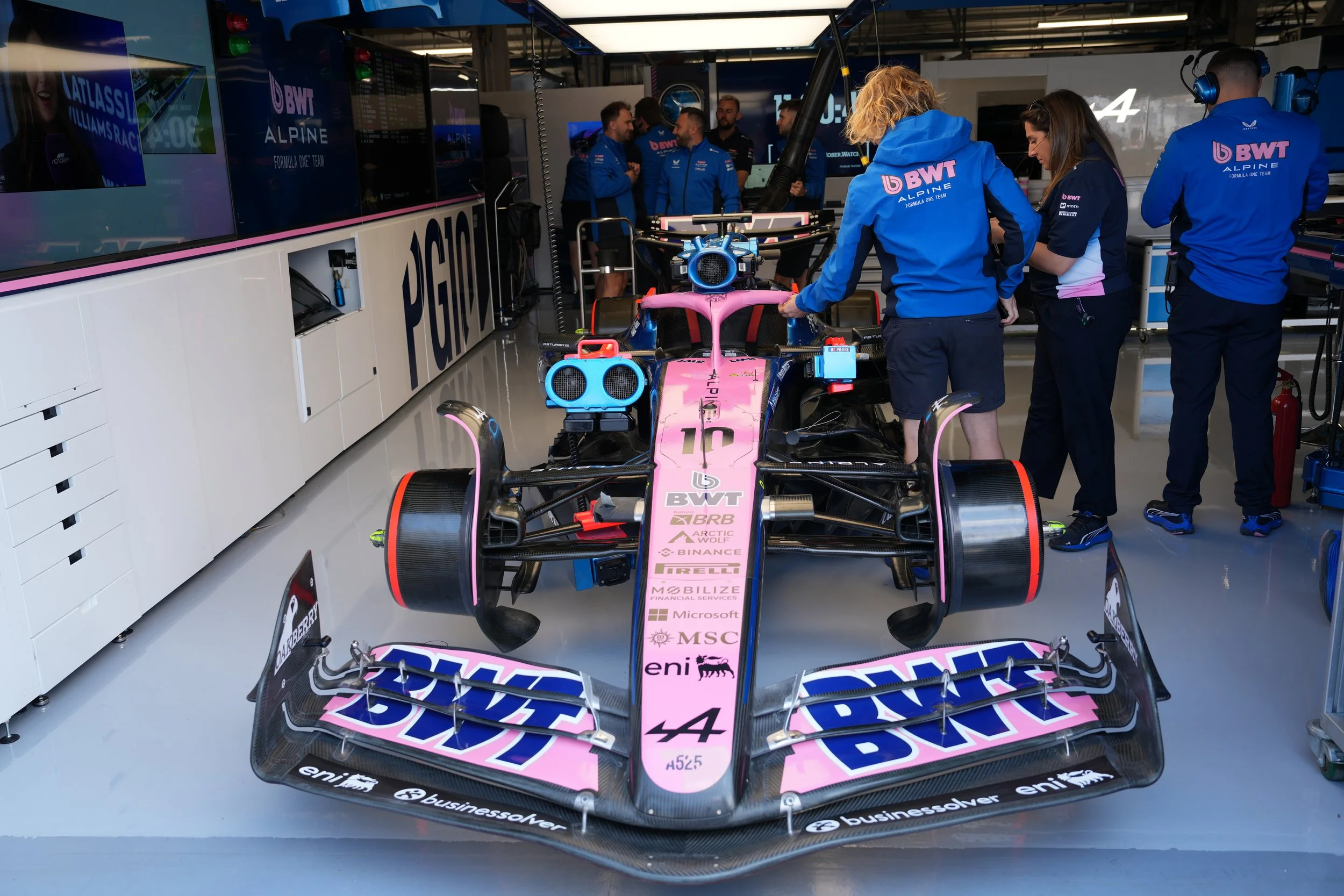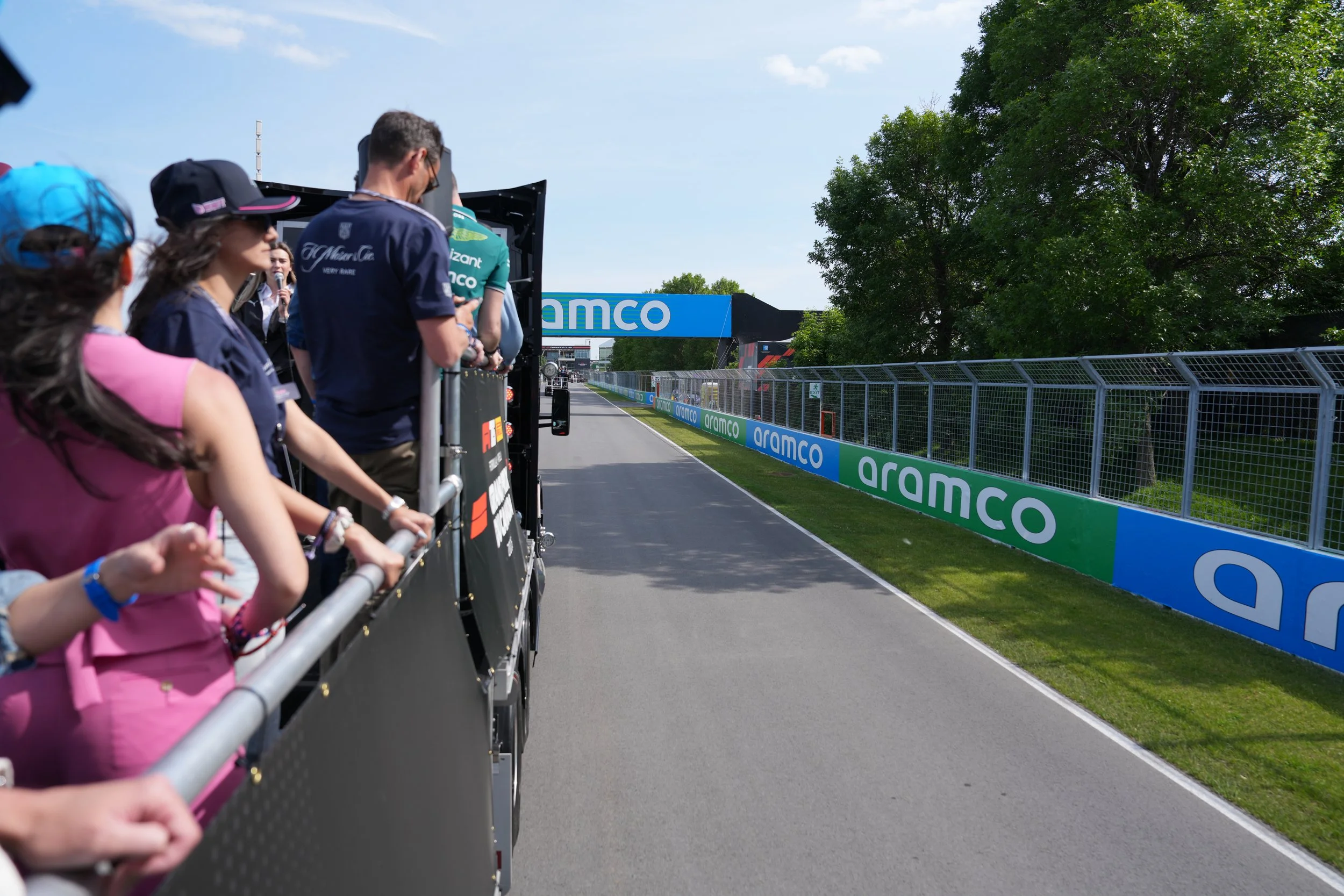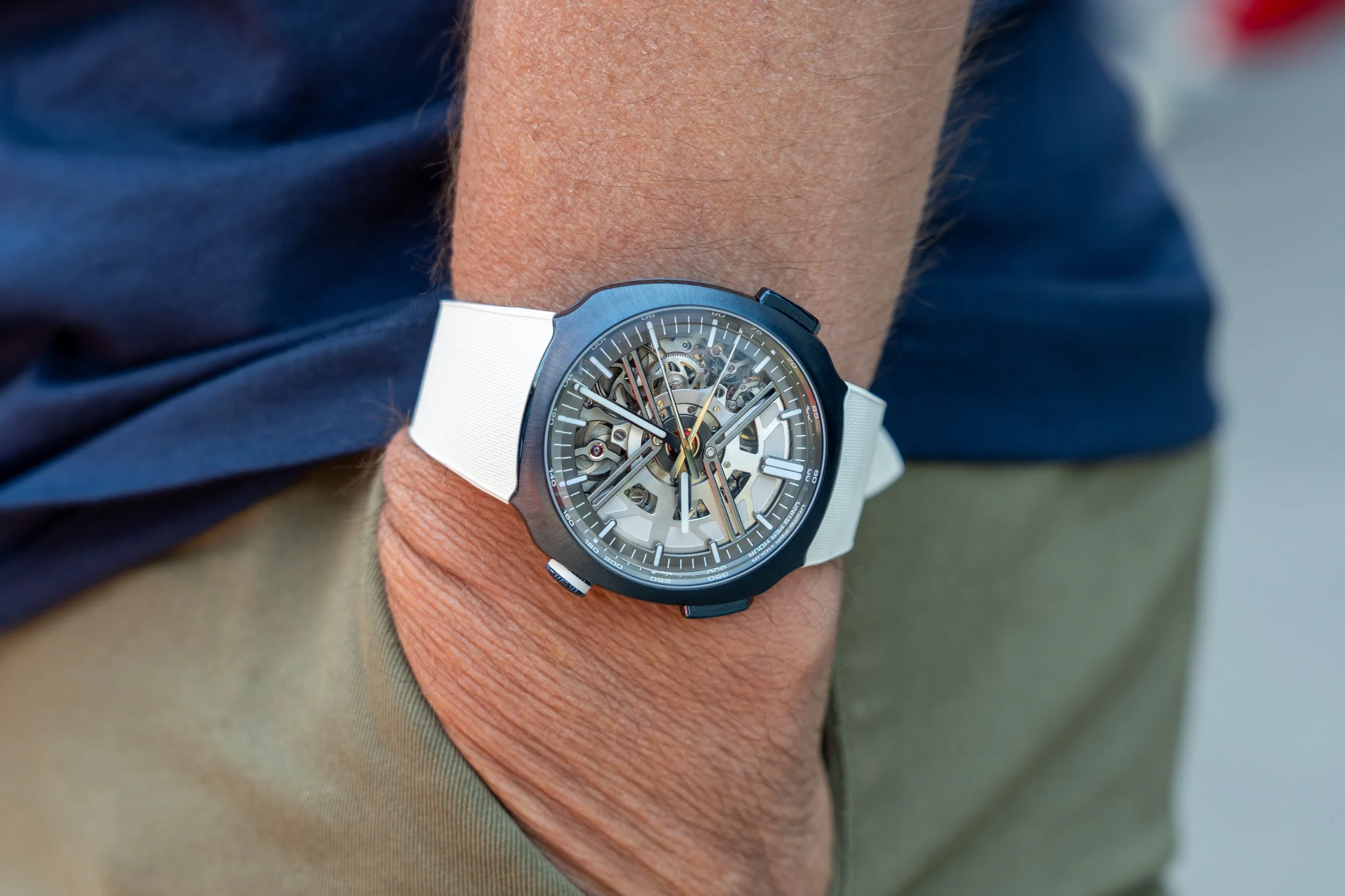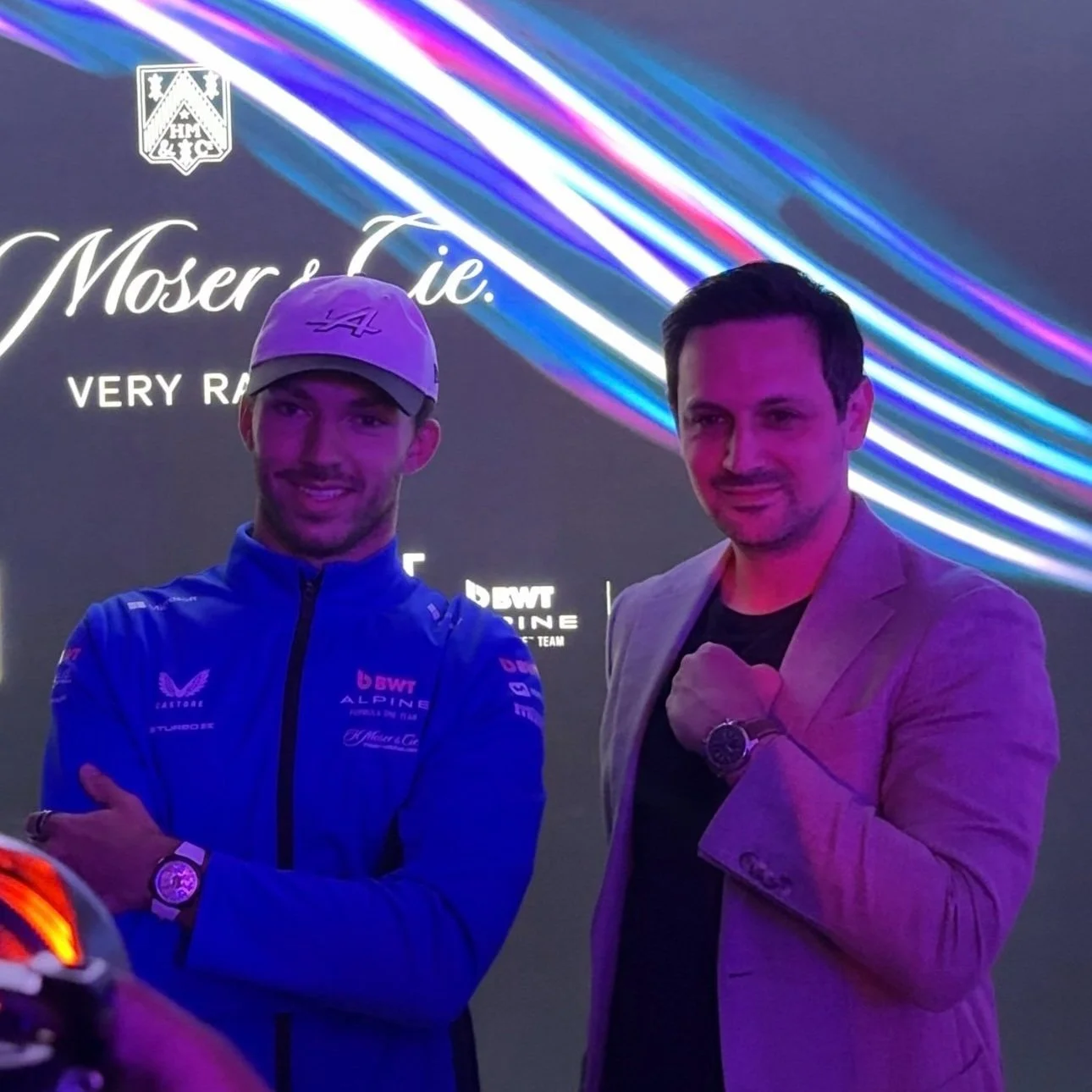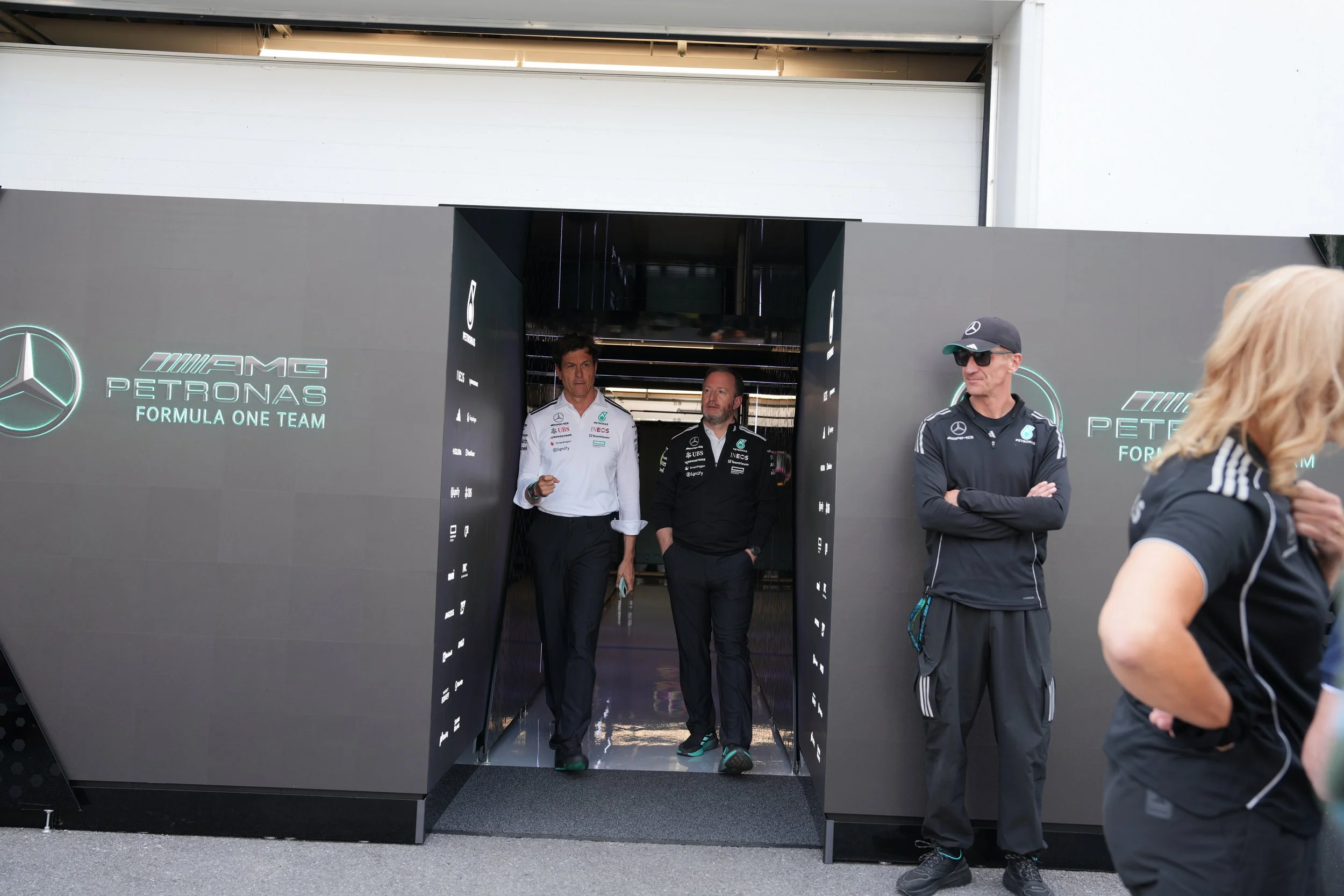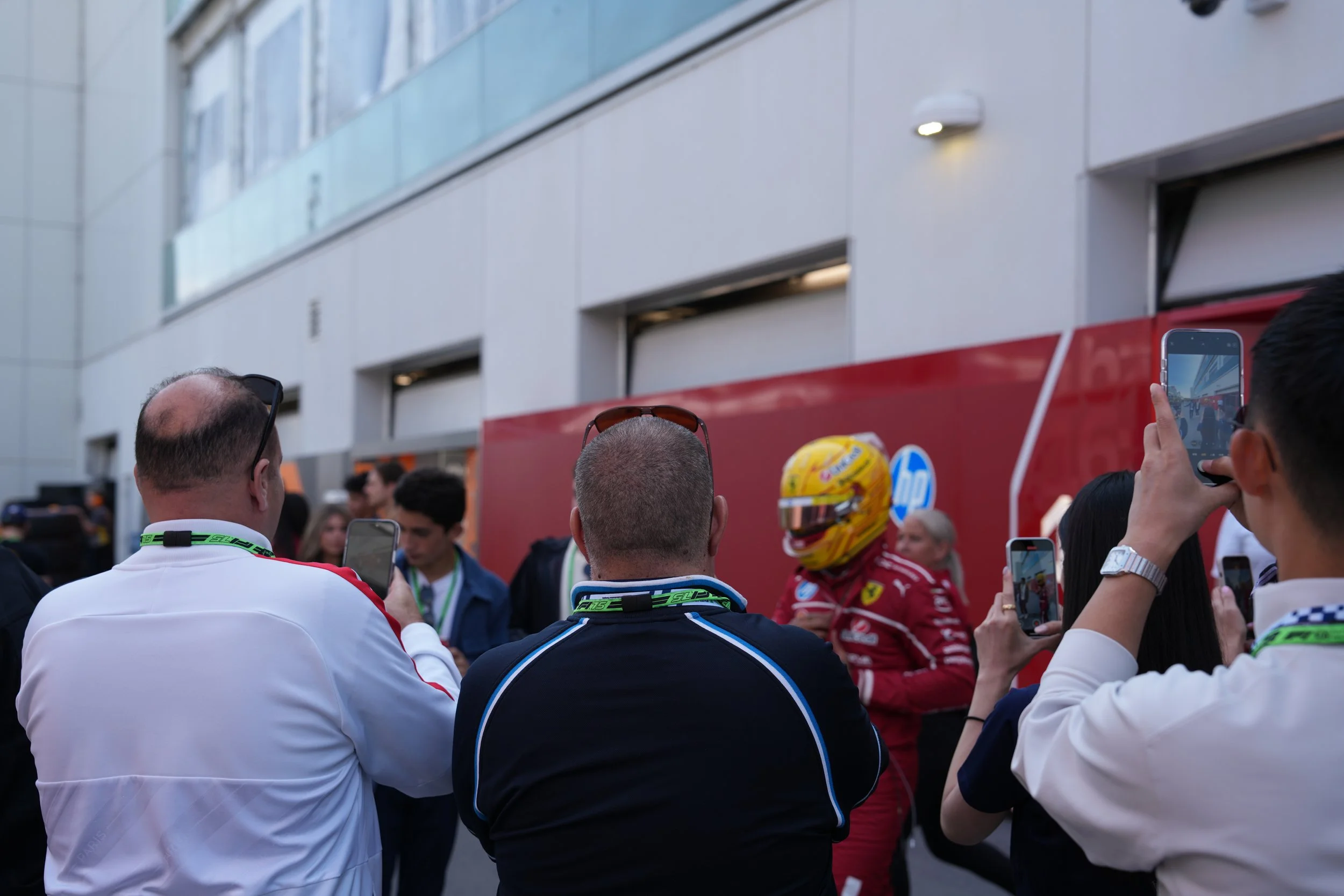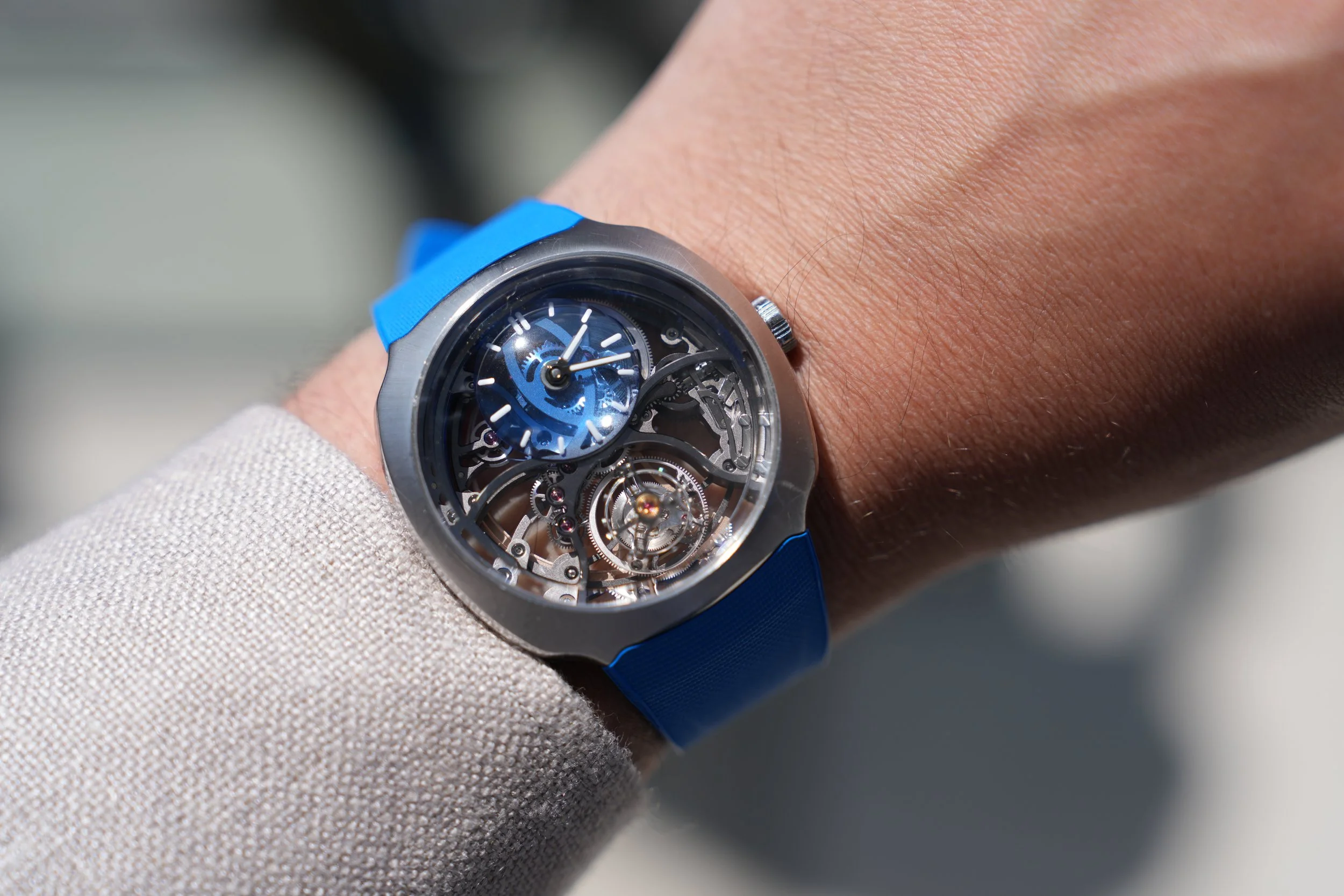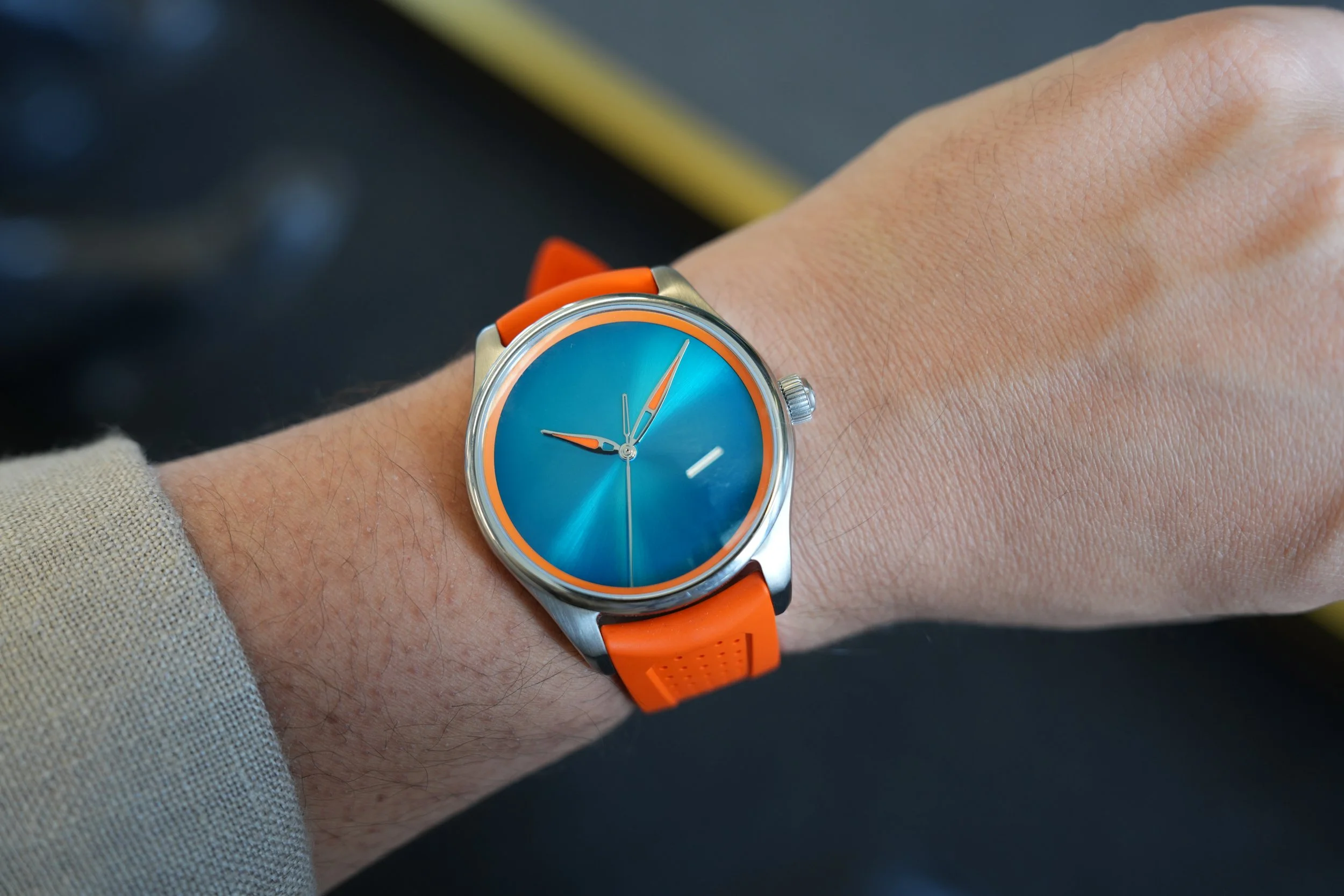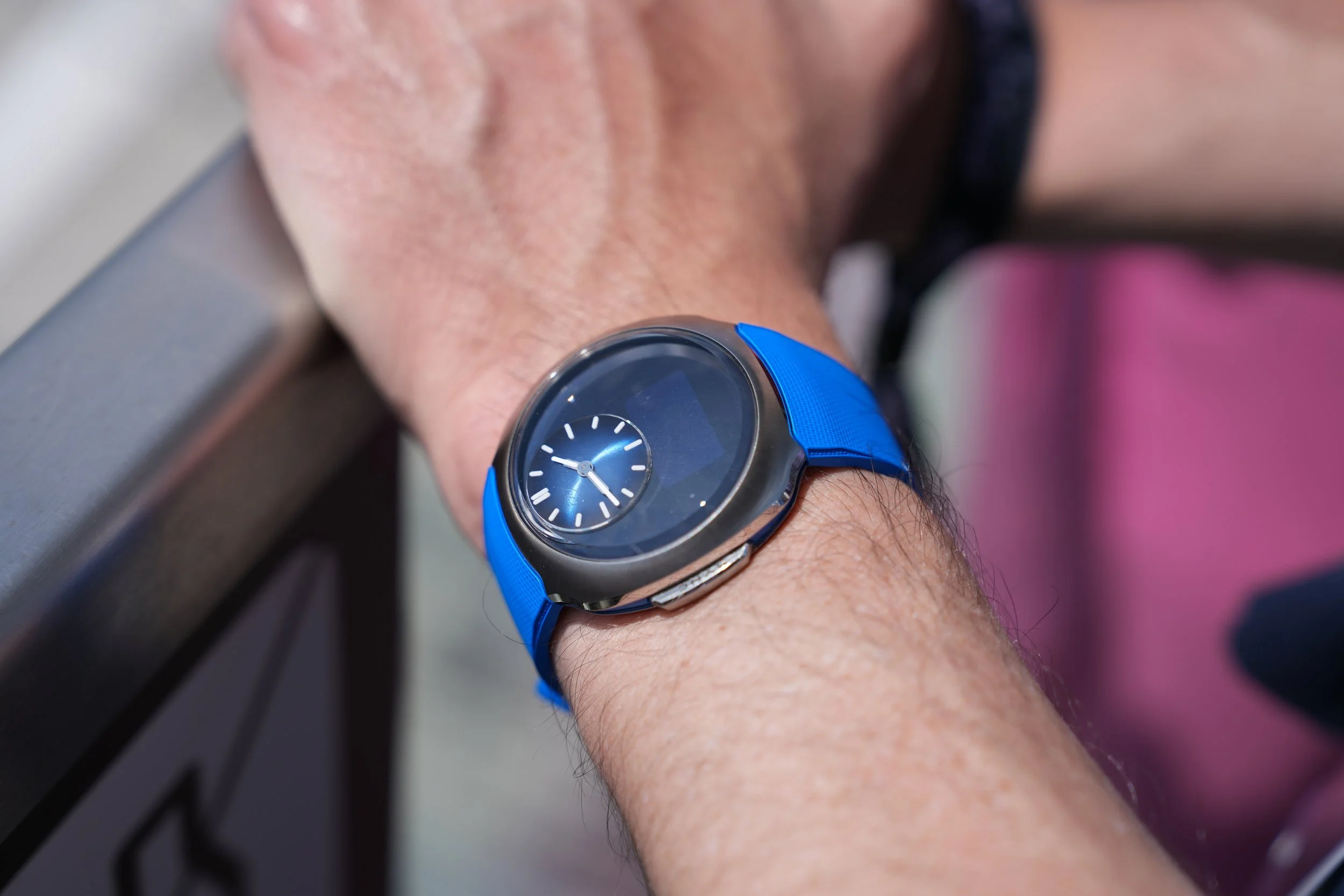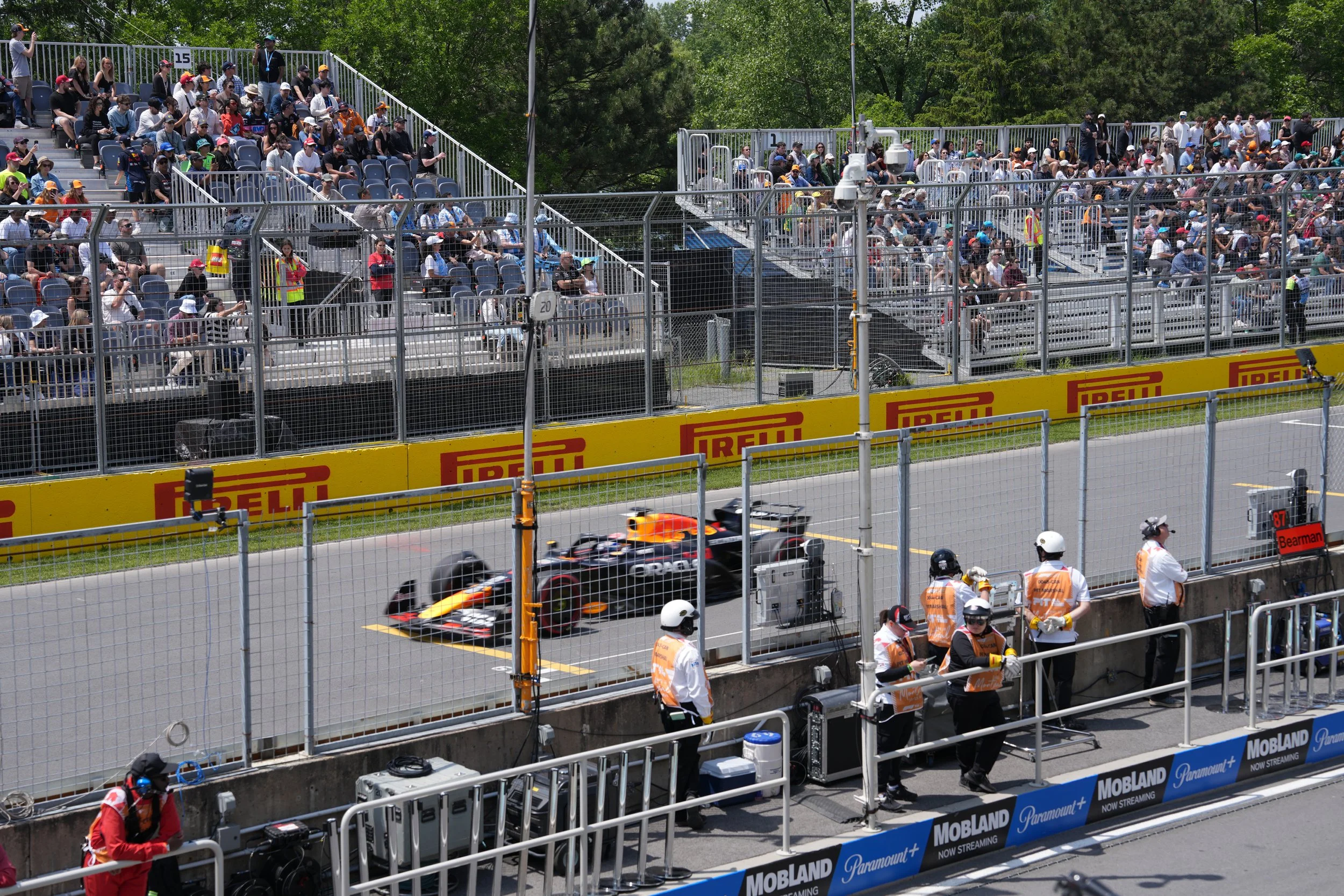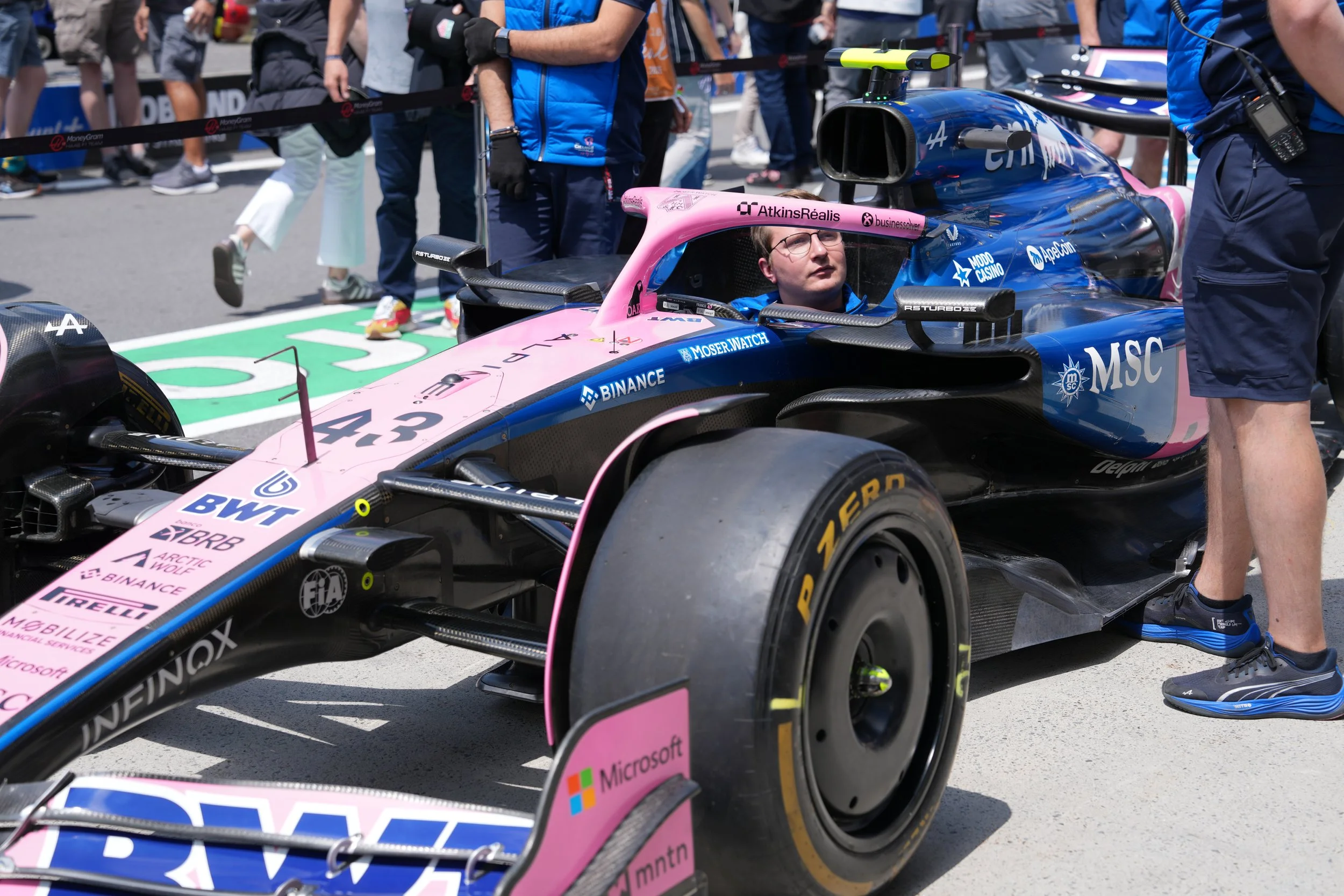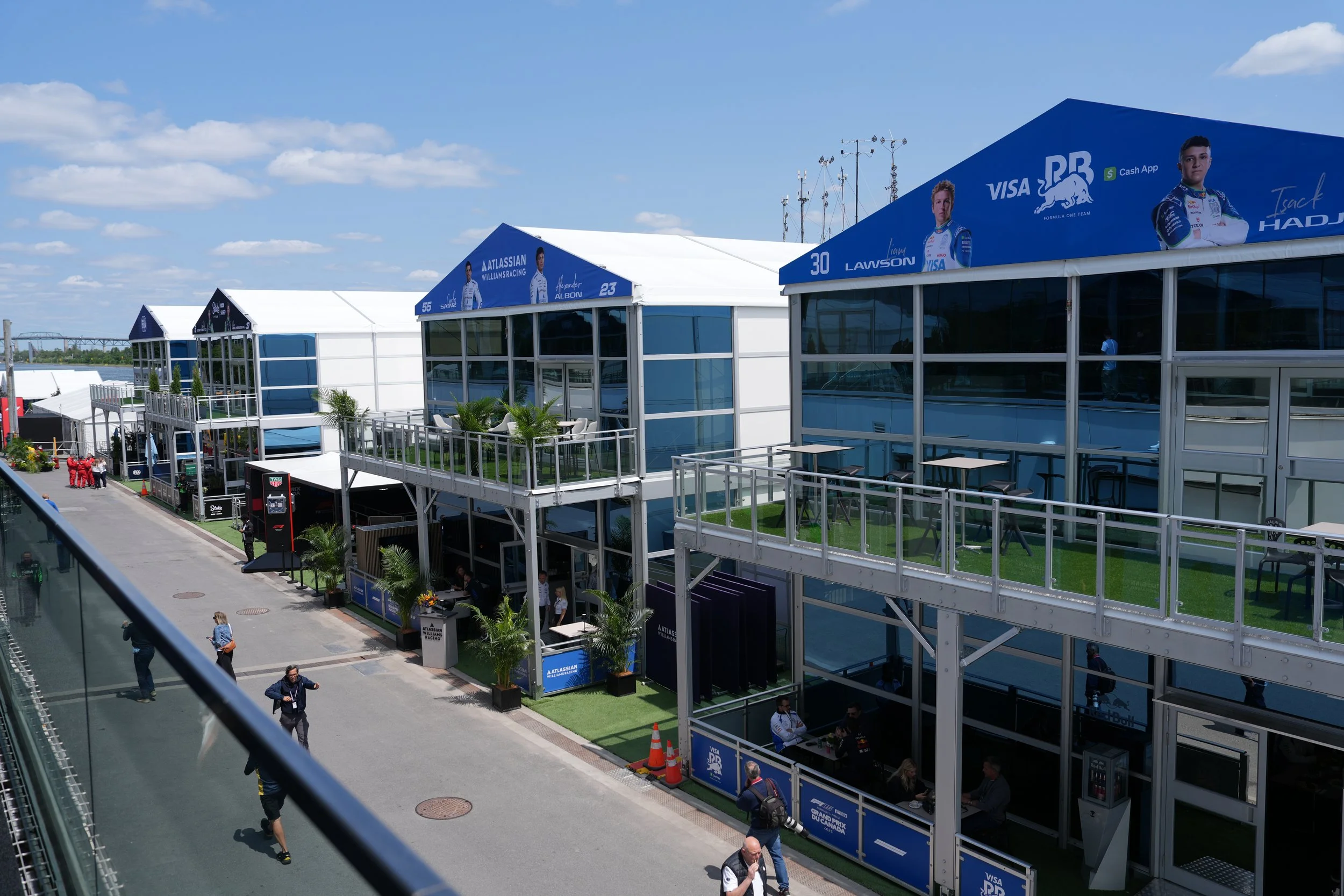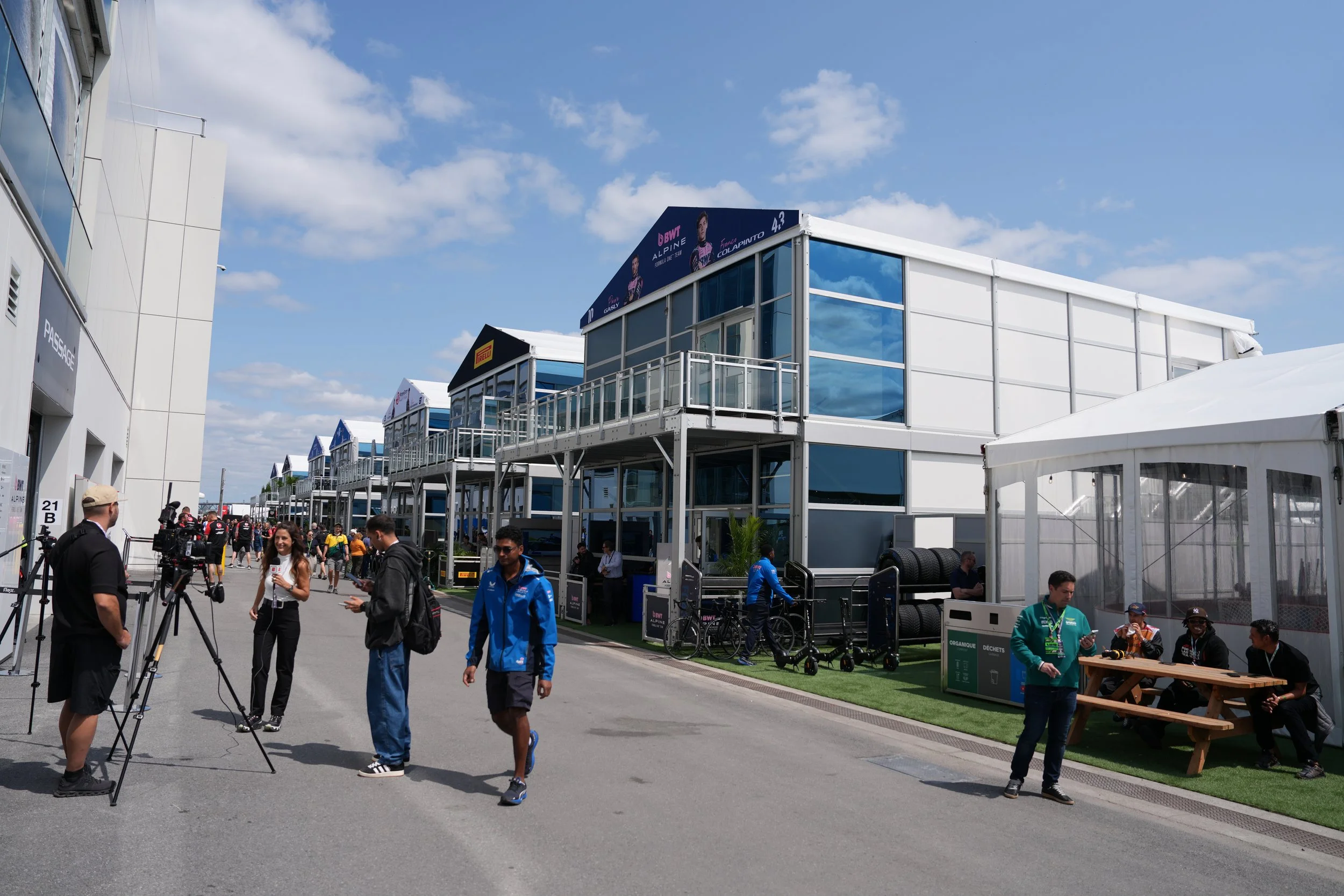Inside the Paddock: My Weekend at the Canadian Grand Prix with H. Moser & Cie
A few weeks ago, I had the opportunity to experience something that felt straight out of a dream, a weekend immersed in the high-octane world of Formula 1, alongside one of the most unconventional luxury watch brands, H. Moser & Cie. What followed was a whirlwind of roaring engines, mechanical artistry, paddock access, and intimate conversations with racers, all centered around the Canadian Grand Prix in Montreal.
This wasn’t just a race weekend. It was a front-row seat to precision, speed, and design, qualities that seamlessly unite motorsport and horology. While I have been a watch collector my whole life, I can’t say the same about F1. But after one weekend in Montreal, I am now a fan (and yes, I immediately binged all 7 seasons of Drive to Survive on Netflix once I was back stateside). I should have known attending the Canadian Grand Prix would turn me into an F1 addict. Having been a sports fan my whole life, particularly football, baseball and hockey, F1 was right up my alley.
Montreal in June is busy, vibrant, and unmistakably international. During race week, the city takes on a different energy. Restaurants are packed, streets are filled with fans in team gear, and there’s a constant hum of activity from downtown to the circuit. It’s a place where old-world charm and modern excitement live side by side. The people are friendly, the food is incredible, and the pace—usually leisurely—feels dialed up a notch during Grand Prix weekend. Everyone seems to be moving a little faster, staying out a little later, and leaning into the moment.
From the very beginning, the experience felt immersive. After arriving, we were quickly swept into the rhythm of the weekend, with Moser organizing every detail with their usual thoughtfulness. Their events never feel overly branded or orchestrated, and that was true here too. You could tell the emphasis was on genuine experience, not just optics. It was clear they wanted us to feel something, not just attend something.
Our first stop at the circuit was the Paddock Club. After clearing security and slipping on our passes, we made our way to the hospitality suites above the team garages, directly facing the pit lane. It’s an unmatched view, with a constant stream of activity unfolding just below. The access alone is rare, but it’s the proximity that makes it surreal. You're no longer watching the spectacle from afar. You're in it.
You hear the cars before you see them. Violent bursts of acceleration, the scream of turbocharged V6s bouncing off the track walls. Then they appear. Blurs of color carving through corners, data-hungry machines dancing on the edge of physics. You feel every upshift in your chest. It’s not just sound. It’s force.
We had access to the Alpine F1 garage, a chance to see the technical side of racing up close. Mechanics hunched over laptops and tire warmers. Engineers focused on live telemetry, each reading like a heartbeat on a monitor. The Alpine A524 stood ready, looking more like a prototype from a science fiction film than something built for a racetrack. You notice the small details up close—carbon fiber textures, razor-sharp wings, and team members communicating in quiet but constant rhythms. It’s like watching a surgical team in motion, except the patient is going 200 miles per hour.
Walking through the paddock gave us a rare look behind the curtain. It’s a surreal environment, where some of the most recognizable names in the sport pass by as casually as if they’re headed to lunch. At one point I saw Max Verstappen walking into the paddock, totally focused and calm. Minutes later, Lewis Hamilton passed by surrounded by just a few staff. There’s a weight to their presence that doesn’t come through on screen. The paddock isn’t glamorous in the way people imagine. It’s narrow, surprisingly quiet at times, and entirely functional. But it’s also electric. You can feel that this is where everything important happens.
Later, we walked the pit lane. Every garage had its own feel. Red Bull’s was quiet and clinical. Mercedes gave off a sense of total control. Ferrari’s garage felt a little more chaotic, in a way that was somehow on-brand. Watching each team operate was like observing different philosophies in action. Everything felt intentional, rehearsed, and relentless. Every cable is placed with care. Every movement seems pre-mapped. You don’t realize just how much goes into a 90-minute race until you stand there and watch how seriously the preparation is taken. It’s an entire world operating on microsecond timing.
There was barely time to settle in before we found ourselves on the back of an open-air truck, driving the same track that the F1 cars would tear through just hours later. Seeing it at that speed, slow, deliberate, exposed, gave you a different perspective. Corners felt tighter, barriers closer, and the racing line came to life in a new way. You begin to understand the discipline it takes to know exactly where to brake and turn at the edge of grip. It was a quiet start to a loud weekend, and one I won’t forget.
Throughout the weekend, I rotated between two of Moser’s newest and most interesting watches. The first was the Moser x Massena LAB Endeavour Chronograph, a watch that mixes vintage styling with Moser’s clean, minimal execution. It wore well with just about anything, subtle enough not to draw attention but detailed enough that anyone who knows, knows. The blue dial and gold-toned accents play beautifully in natural light, and the chronograph pushers have a tactile, responsive feel. It felt right at home on the edge of a pit lane, a blend of nostalgia and utility.
The other watch was something completely different. The Streamliner Alpine Limited Edition, officially called the Alpine Mechanics Edition, is technically a smartwatch. But this isn’t a product for the public. It’s a tool built specifically for Alpine’s garage and pit crew, offering real-time access to racing data. Unlike most smartwatches, it’s not trying to be everything. It’s focused, purpose-built, and created as a genuine utility device. Wearing it at the circuit, knowing the team next to us relied on the same piece of equipment, made it feel more like part of the gear than an accessory. It still carried the signature Streamliner case and Moser’s organic design language, but with a sharp edge of function that made it something entirely its own. It’s rare to see a luxury brand create something like this and mean it.
I also had the chance to check out the Alpine Drivers Edition, a mechanical chronograph powered by a skeletonized version of the AgenGraphe movement developed with Agenhor. This isn’t a traditional chronograph. There are no subdials. The layout is fully central, and the bridges are shaped like suspension arms. There’s a helmet-shaped bridge anchoring the center, and a rotor modeled after the Alpine A110’s wheel rim. It’s aggressive, technical, and thoughtful in the way only a truly collaborative piece can be. From a horological perspective, it’s an incredibly complex and deliberate watch. From a motorsport perspective, it’s a love letter to the machine. The Mechanics and Drivers Editions are sold as a set, a pairing that reflects the dual nature of modern motorsport, digital data and mechanical emotion working side by side.
Saturday gave us a break from the track. We spent the day exploring Old Montreal, walking its cobblestone streets and taking in the city’s slower pace. It’s a totally different world from the circuit, full of cafés, galleries, and architecture that hasn’t changed in generations. The highlight was stepping inside the Notre-Dame Basilica. The interior is stunning, with deep blue vaulted ceilings, golden accents, and stained glass that shifts with the light. It was quiet, beautiful, and completely removed from the adrenaline of the circuit. A reminder that contrast is part of what makes these weekends memorable.
That night, Moser hosted a party to close out the trip. It was relaxed but still full of energy, with everyone reflecting on the past couple of days. I had the chance to speak with Pierre Gasly, one of Alpine’s current drivers. He was open and thoughtful, talking about the mental demands of the sport, the split-second decision making, and how every detail on and off the track matters. He also talked about the team’s partnership with Moser, how he was involved in the creation of the Streamliner Driver’s Edition, and how F1 and watchmaking are similar in many ways (at least from the technical side). What stood out most wasn’t just his focus, but how clear it was that he genuinely cares about his role in the team and the future of Alpine.
Moser also brought in two full F1 racing simulators, complete with pedals, curved screens, and force-feedback steering. I gave it a try, hoping to channel a little bit of what I’d seen on track. Let’s just say I gained even more respect for the drivers. The level of concentration and control it takes, even in a simulation, is humbling. It’s the closest most of us will ever get to the experience of driving an actual Formula 1 car, and it left me with a new level of appreciation for the skill involved.
As I flew home, I kept thinking about how well F1 and independent watchmaking complement each other. Both live at the edge of precision. Both are built by teams chasing every fraction of a second. Both require obsessive attention to detail and a willingness to question the rules. There’s a deep respect for craft in both worlds, and a shared understanding that performance without soul is forgettable. H. Moser & Cie has never followed the expected path. Their watches are quiet rebellions. Partnering with Alpine feels like a natural extension of that mindset. It’s not just about being on the grid. It’s about being part of the process.
And for a few days in Montreal, I got to be part of it too.





